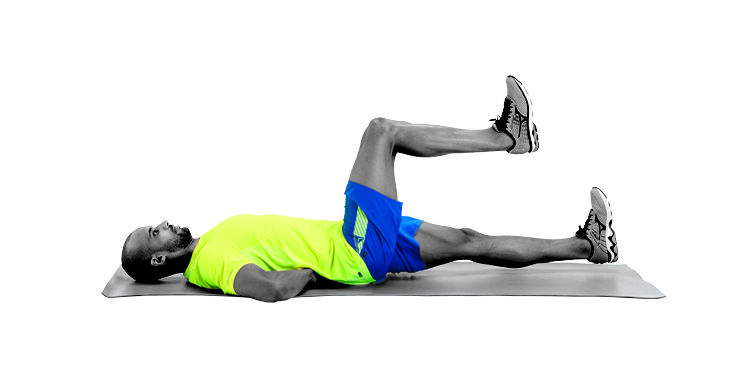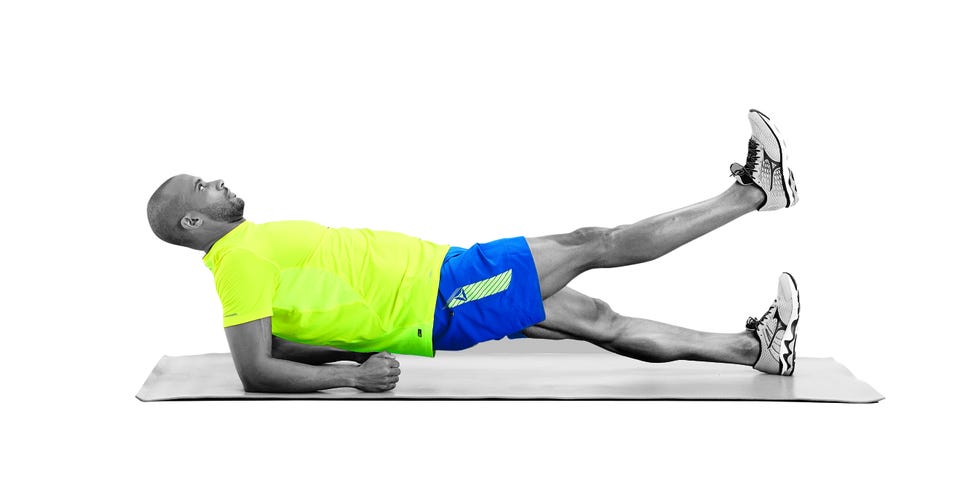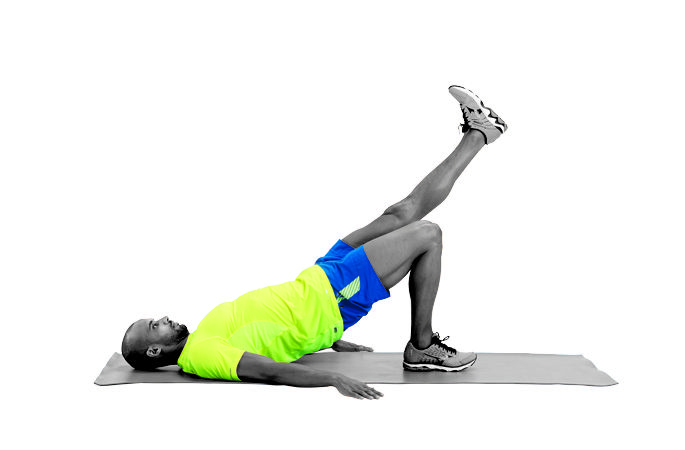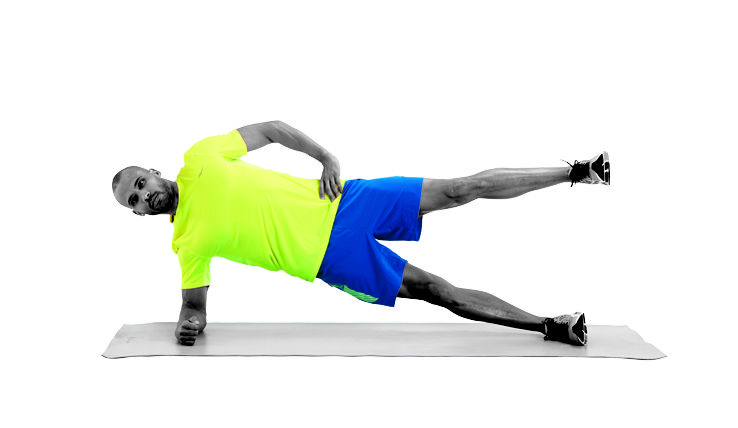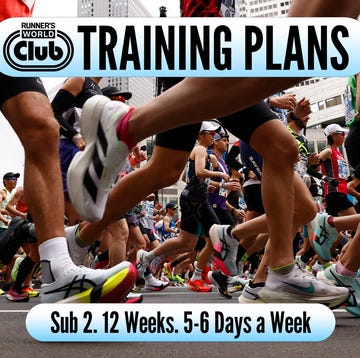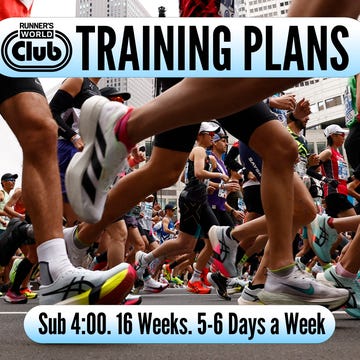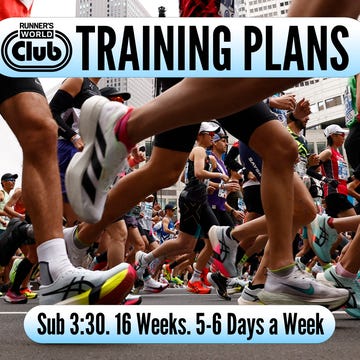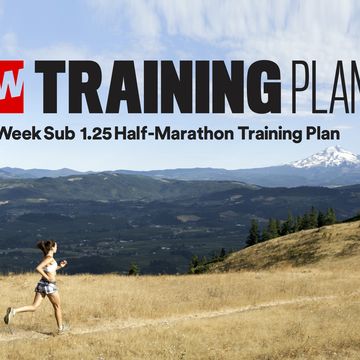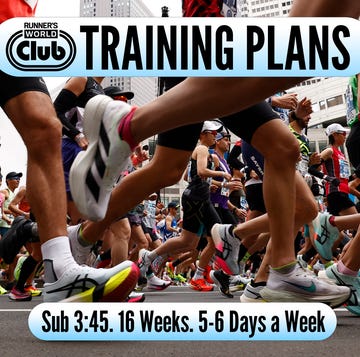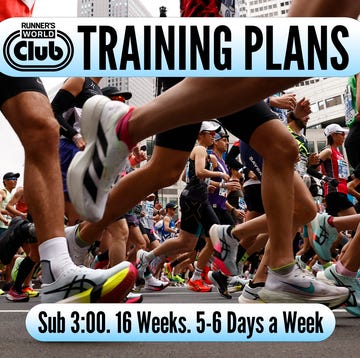For runners with experience over 5km and 10km, the half marathon is the obvious next step.
And while it’s a challenging distance, it’s easier to balance with the demands of everyday life, compared to training for a full marathon. With the advice below and by following the full plan (part of Runner's World Club), your endurance and strength as a runner will improve as you incorporate structured run sessions and build distance on your long runs.
However, attention will also need to be paid to how your body recovers best from the training in order to avoid injury and achieve your goals.
What everyone's reading
Respect the distance, embrace the challenge and enjoy your journey to run a half marathon.
What pace do I need to run for a sub-two half marathon?
You'll need to run an average pace of 9:09 per mile or 5:40 per kilometre.
Do I need to take on fuel to run a sub-2:00 hour half marathon?
You’ll need nutrition, and hydration, on the road, says nutritionist Pamela Nisevich Bede. 'Some runners think they can get through a half marathon without sports drinks or gels, but that can make for painful and slow final miles,' she says. Aim for 45-60g of carbs each hour you’re running and practise fuelling on long runs so there are no surprises on race day. Experiment with what works for you, whether it's gels, drinks or chews.
Whatever works for you during the run, you will also need to make sure you are well fuelled before your start. Again, practice what works for you in training rather than leaving it until race day, so you can find the perfect pre-race breakfast that's right for you.
I’m finding the training hard, how do I know when I need to back off?
If you are pushing the pace to get faster or adding distance to go further, your body will talk back to you. During training, learn to distinguish ‘good pain’ (discomfort from leaving your comfort zone) from ‘bad pain’ (something verging on injury).
'There is a difference between muscles that burn at the end of a workout and something that hurts every time you take a step,' says sports psychologist Jim Taylor. 'Part of training is learning body awareness. You also need to experience some discomfort so that when it occurs in a race, you know you can push through it.'
What kind of core-work should I be doing on?
Core exercises will help you maintain good form until the end of your race, so try and fit these into your weekly training plan:
1. Bicycles
Why: Works your lower abs with a dynamic exercise that mimics running.
How: Lie on your back. Bend your right knee and raise your leg so your right shin is parallel to the ground. Lift your left leg a few inches off the floor. Hold for two seconds, then switch legs. Alternate legs for 30-60 seconds.
2. Advanced plank
Why: Targets core muscles that keep your pelvis natural, works the glutes.
How: Get in a plank, forming a straight line from your head to feet. Brace your abs and life your left leg and right arm. Hold for two secs, squeezing your glutes, then return to start. Switch sides and alternate for 30-60 seconds.
3. Reverse plank with leg lifts
Why: Targets your erector spinae muscles (which keep your back straight) as well as your glutes.
How: Lie face up, weight on your elbows and heels. Lift your hips. Lift your right leg. Hold for several seconds. With hips raised, switch legs. Alternate legs for 30-60 seconds.
4. Marching bridge
Why: Strengthens the hips to keep the pelvis stable, activates the glutes.
How: Lie with your right foot on the ground, left leg extended. Lift your hips and your left leg. Hold for two seconds. Then, while keeping your hips in the air, switch legs. Alternate sides for 30-60 seconds.
5. Side plank with leg raises
Why: Strengthens the oblique muscles to keep your spine erect when you are running.
How: Get in a side plank, forming a line from head to feet. Raise and lower your top leg for 15-30 seconds. Then switch sides, and raise and lower your other leg for 15-30 seconds.
Who is this plan for?
Our 16 week sub-2:00 half marathon plan, encompassing three to four runs per week, is aimed at experienced runners who are regularly running a minimum of two to three times per week. This plan will introduce you to structured training. The types of sessions you’ll come across are explained below.Why is the plan broken down into four-week blocks?
We have broken the full plan down into four-week blocks to give you regularly opportunities to reflect on how your training is going and change plan to one that is more suitable to you if you need to. Not all progress is linear, and if you find the last four weeks were a little too much, or not enough, for your current level or lifestyle, that’s okay – we will help guide you to pick out the best training plan for you as you get closer to race day.
What if I can’t hit the paces in the plan?
The paces are not set directly for you and the day you’re running (it could be super-hot or you might have had a poor night’s sleep), so don’t feel like you have to stick to them 100%. Allow yourself 5-10 seconds either side of the suggested pace per mile or per kilometre.
If it doesn’t feel right on the day, and if that feeling is happening on every session, then consider dropping to a different pace plan on the link here.
What types of session are included in the plan?
Rest days: Rest days are an important part of your recovery and adaptation. Respect them and use them as a chance to reflect on your sleep and nutrition. Find some calm space and time to wind down to lower your stress levels and have some time away from your smartphone.
Easy runs: Easy, conversational paced running forms the backbone of endurance for events from middle distance up to ultramarathons. Running at a relaxed, easy, conversational pace helps to improve your ability to burn stored fats, improves capillarisation at the lungs and muscles and increases the development of mitochondria (a cellular component that supplies energy to your muscle cells). These runs also allow you to increase your training volumes in a sustainable way. While we have suggested a guideline pace, how these runs feel is probably even more important. You should be able to hold a comfortable conversation and breathe easily. If you run to heart rate these runs might be between 60-75% of your maximum heart rate, depending on the individual.
You can replace some of these easy runs with cardiovascular cross-training sessions of a similar volume and intensity on a bike, rowing machine or elliptical trainer, or in the pool, swimming or aqua jogging. This is a particularly good idea if you are injury prone because it will reduce the impact on your muscles and joints, while still working your heart and lungs.
Interval sessions: Interval sessions involve a series of short repetitions of running, typically between 30 seconds and 5-6 minutes, with either static rest periods or a very easy jog recovery. Interval training is designed to get you breaking out of your comfort zone and challenging your body to work harder or faster, building fitness and callusing your mind ready for race day.
Fartlek runs: Fartlek training is similar to interval training but differs in that the recovery periods are run at an easy or even steady intensity, rather than static rests. Often fartlek sessions will have a more relaxed structure and include a mixture of different paces in one session. They can be an effective way of varying your paces while maintaining a focus on continuous running and building endurance.
Lactate threshold sessions: These sessions are designed to allow you to sustain higher intensity paces for longer. They can include a mixture of longer intervals between 3-15 minutes or they can be run as continuous efforts of between 10-40 minutes. They are run at a strong, but just about sustainable, intensity. It’s typically a pace you could hold for 60-70 minutes in a race.
Progression runs: Progression runs – which progress in speed as the run goes on – are a great way to start to work quality running into your week without getting too worked up about structure. They are good for getting you used to running at the intensity you would in a race and can be an effective way of adding more threshold running and race-pace efforts into your training week.
Long runs: Long runs are a key run in your training plan. They are an essential building block for endurance, and not only have a wide range of positive effects on your cardiovascular system, but condition your muscles and bones to run for longer, while also helping to improve your running economy. Some long runs will be run at a fully easy intensity but sometimes you may be asked to run at a stronger pace or even include some blocks of race pace running depending on what you are training for.
Strides: Strides are a good way to get used to running faster and developing speed without the physical and psychological demands of full sprinting. They involve running short efforts, normally between 60-100m, where the focus is on running at a fast but relaxed speed and running with good form. In the plan, we include strides as part of our warm-ups before interval training to help you prepare for the sustained faster running in the main session. You may also see strides included after easy runs on occasions to help promote a feeling of speed and zip even on low-intensity days. For more on how to perform them correctly, hit the link here.
Strength and conditioning sessions: Strength and conditioning sessions are an important complement to your running. By building a greater number and size of muscle fibres, strength training can help you sustain paces for longer, improve running economy and may play a role in injury prevention. We have written a number of common-sense bodyweight plans, but feel free to replace these with gym-based strength training or classes, such as Pilates.
Training Plan
These are the first two weeks of the training plan. To access the rest, you'll need to be a Runner's World Club member. As a member, not only do you gain access to this plan and over 60 more plans covering all distances and time goals, but you'll get exclusive offers and discounts from brands and events, as well as a subscription to the magazine and much, much more.
Find out more about the different membership options here
Tom Craggs is the National Endurance Manager (Off Track) with England Athletics, a running coach and a contributor for Runner's World.
Robbie Britton is an ultra-endurance coach, athlete, author and the British 24hr record holder (277km/172miles). He is also one the brains (alongside Tom Craggs) behind all our Runner's World Club training plans.

